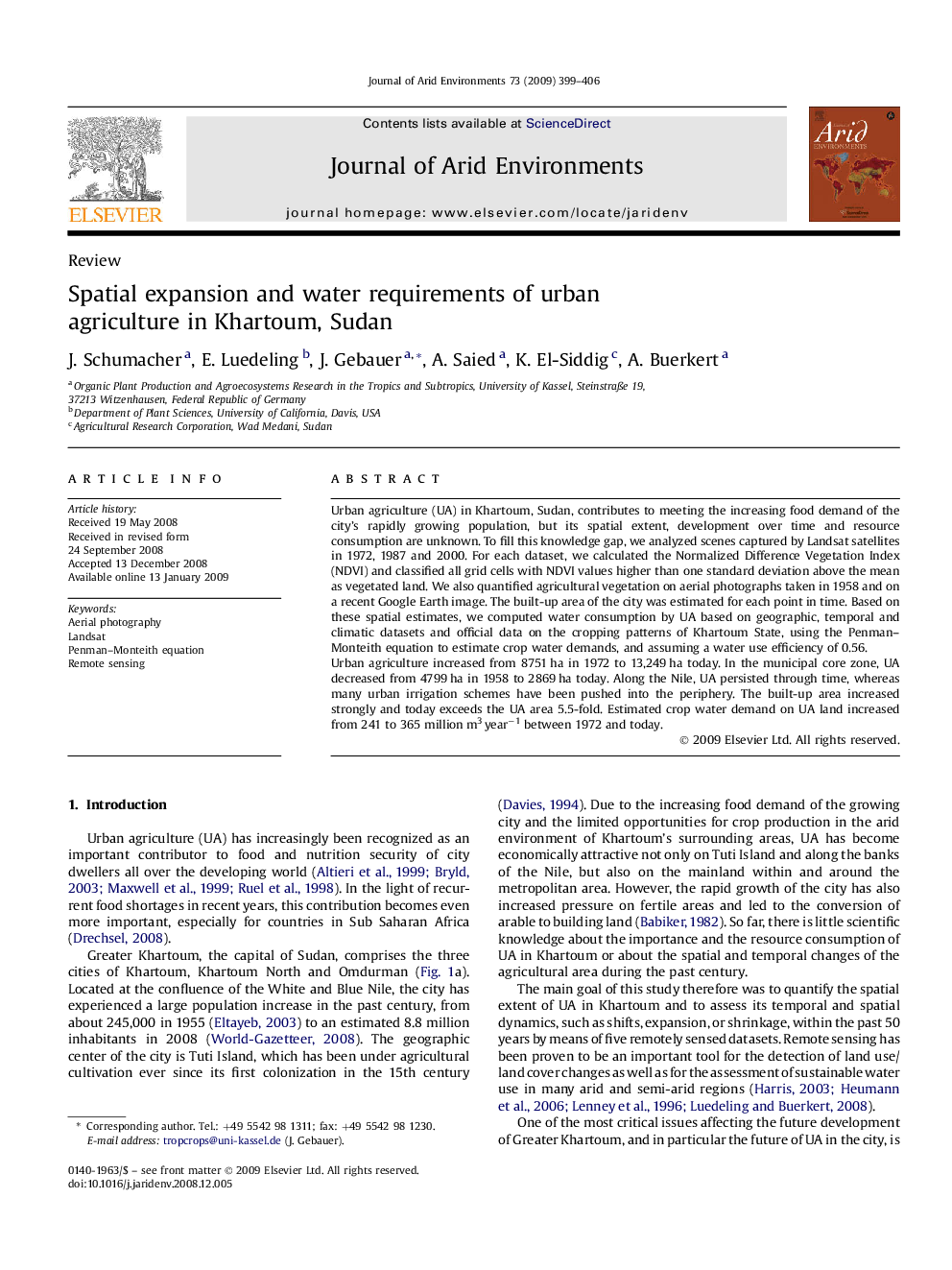| Article ID | Journal | Published Year | Pages | File Type |
|---|---|---|---|---|
| 4393943 | Journal of Arid Environments | 2009 | 8 Pages |
Urban agriculture (UA) in Khartoum, Sudan, contributes to meeting the increasing food demand of the city's rapidly growing population, but its spatial extent, development over time and resource consumption are unknown. To fill this knowledge gap, we analyzed scenes captured by Landsat satellites in 1972, 1987 and 2000. For each dataset, we calculated the Normalized Difference Vegetation Index (NDVI) and classified all grid cells with NDVI values higher than one standard deviation above the mean as vegetated land. We also quantified agricultural vegetation on aerial photographs taken in 1958 and on a recent Google Earth image. The built-up area of the city was estimated for each point in time. Based on these spatial estimates, we computed water consumption by UA based on geographic, temporal and climatic datasets and official data on the cropping patterns of Khartoum State, using the Penman–Monteith equation to estimate crop water demands, and assuming a water use efficiency of 0.56.Urban agriculture increased from 8751 ha in 1972 to 13,249 ha today. In the municipal core zone, UA decreased from 4799 ha in 1958 to 2869 ha today. Along the Nile, UA persisted through time, whereas many urban irrigation schemes have been pushed into the periphery. The built-up area increased strongly and today exceeds the UA area 5.5-fold. Estimated crop water demand on UA land increased from 241 to 365 million m3 year−1 between 1972 and today.
